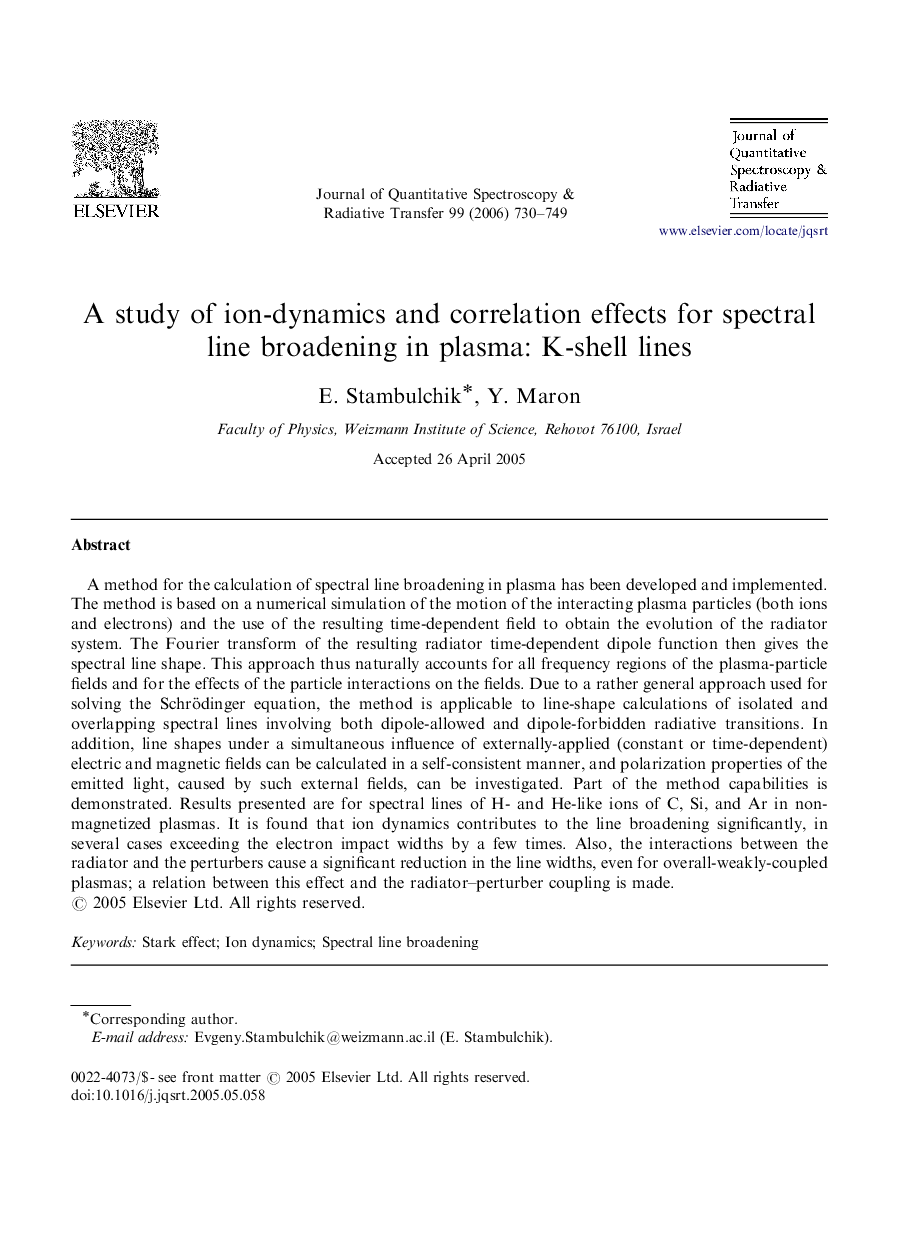| Article ID | Journal | Published Year | Pages | File Type |
|---|---|---|---|---|
| 5431138 | Journal of Quantitative Spectroscopy and Radiative Transfer | 2006 | 20 Pages |
A method for the calculation of spectral line broadening in plasma has been developed and implemented. The method is based on a numerical simulation of the motion of the interacting plasma particles (both ions and electrons) and the use of the resulting time-dependent field to obtain the evolution of the radiator system. The Fourier transform of the resulting radiator time-dependent dipole function then gives the spectral line shape. This approach thus naturally accounts for all frequency regions of the plasma-particle fields and for the effects of the particle interactions on the fields. Due to a rather general approach used for solving the Schrödinger equation, the method is applicable to line-shape calculations of isolated and overlapping spectral lines involving both dipole-allowed and dipole-forbidden radiative transitions. In addition, line shapes under a simultaneous influence of externally-applied (constant or time-dependent) electric and magnetic fields can be calculated in a self-consistent manner, and polarization properties of the emitted light, caused by such external fields, can be investigated. Part of the method capabilities is demonstrated. Results presented are for spectral lines of H- and He-like ions of C, Si, and Ar in non-magnetized plasmas. It is found that ion dynamics contributes to the line broadening significantly, in several cases exceeding the electron impact widths by a few times. Also, the interactions between the radiator and the perturbers cause a significant reduction in the line widths, even for overall-weakly-coupled plasmas; a relation between this effect and the radiator-perturber coupling is made.
